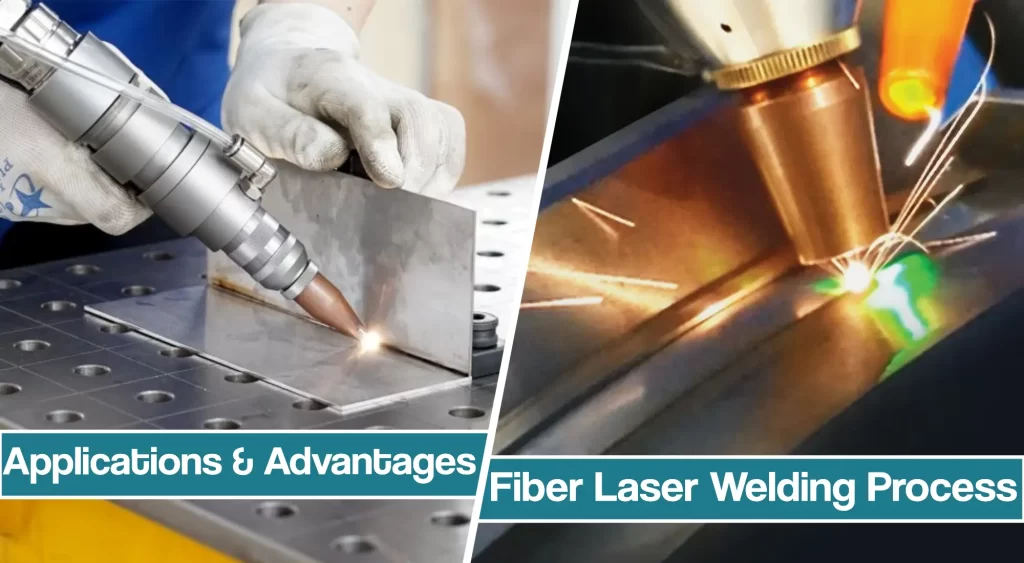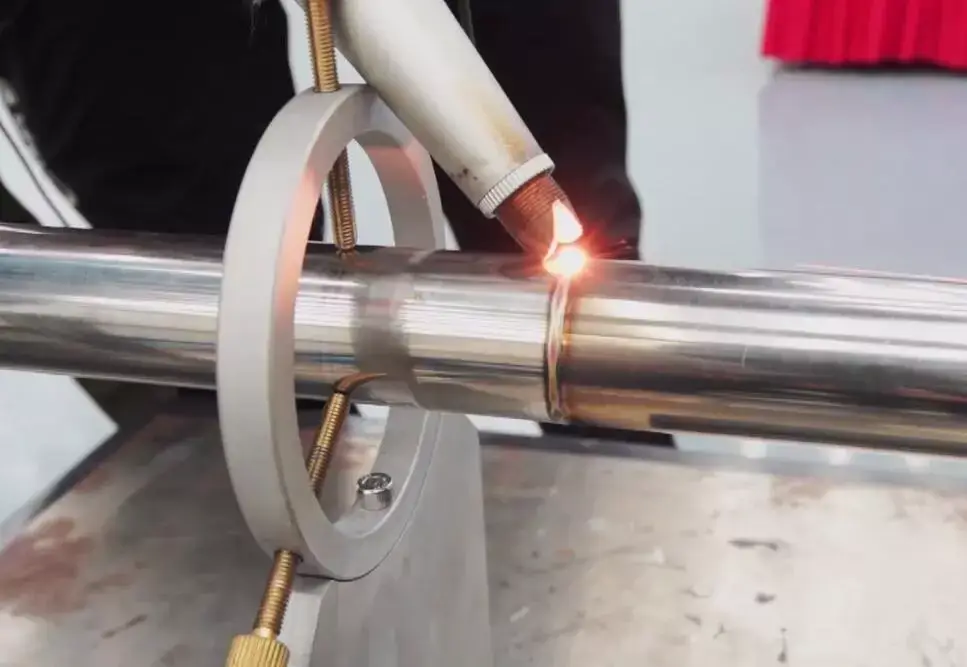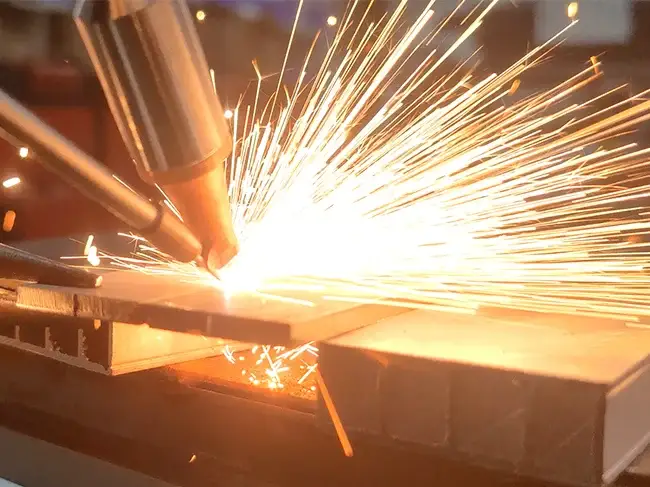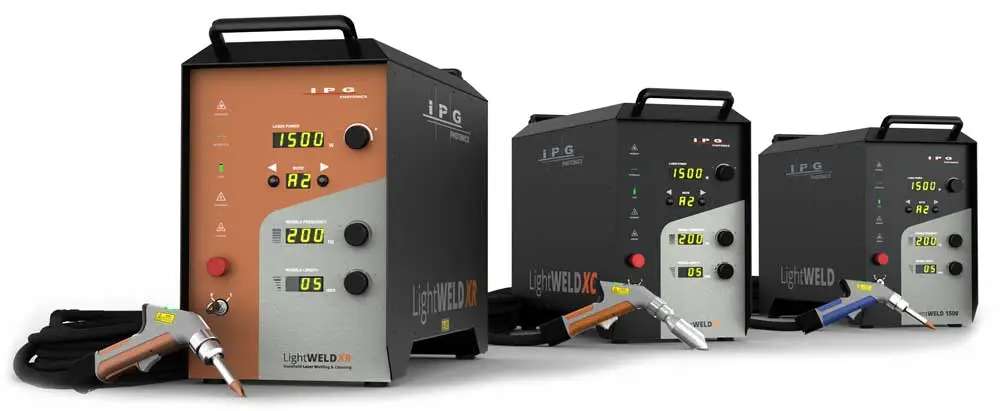Single-mode, medium-power optical fiber lasers are well suited to the precision welding of metals across a diverse range of applications.
Medium- and high-power optical fiber lasers that operate in the 1-μm region have proven their capabilities for cutting and welding a wide range of metals in industrial materials processing applications.

This article addresses the use of medium-power (400-W) fiber lasers in precision welding, including performance and process capabilities, key requirements of the welding process, and their use in butt welding applications with two example case studies, welding of high-quality stainless steel sheet, and welding of coil tape for general manufacturing use.
Application of Fiber Laser Welding
Fiber lasers have been extensively deployed in advanced manufacturing applications, such as precision cutting, micromachining, rapid prototyping, and laser welding; their performance advantages in terms of beam quality, depth of field, parametric dynamic range, wall-plug efficiency, fast welding speed, continuous welding process versatility, reliability, and cost, have been well recognized.
In laser welding applications, medium-power fiber lasers offer industrial process technologists and users new degrees of operational freedom and process control whilst concurrently delivering major benefits in terms of ongoing operational costs due to laser welding maintenance support, day-to-day process “tuning”, and consumables consumption.

These latter features can be of crucial importance to high-volume continuous manufacturing processes where 24×7 operations at high productivity and “right-first-time, every-time” are crucial to both cost and capacity.
Fiber Laser Welding Process
There are many choices of beam source for laser welding using a 1 μm source. Historically “welding lasers” would be “long-pulse” devices capable of delivering significant pulse energy (Joules) with kW-class peak power in pulse durations of the order of milliseconds (ms).
You can read more about different laser metal joining methods in our full guide on the laser welding process.
The maximum duty cycle for this class of pulsed source typically would be 10% (at full power), and the pulse repetition rate typically would be up to 1kHz; the limited pulse-repetition rate of this type of beam source could frequently be the process-limiting factor.

With this class of laser, the welding process is generally “conduction” based, whereby energy is delivered into the material in a series of pulses and is absorbed on the surface of the material. Sub-surface melting occurs and the energy thermally diffuses through the weld zone by conduction and convection in the melt.
Process speed and penetration are determined by the laser parameters, in particular pulse frequency, pulse energy and average power. Consequently, conduction welds are semicircular in cross section with aspect ratios of 1:2 or less. Due to the (slow) thermal diffusion process for creating the melt, the heat-affected zone (HAZ) around the weld can be substantial.
High-brilliance CW lasers such as the fiber laser and the disc laser provide an alternative process for fusion welding. Provided that the focused intensity of the beam at the metal surface exceeds a threshold, the incident energy raises the metal temperature above its boiling point, produces a metal vapor channel (“keyhole”) that absorbs the incident laser power, and converts it into heat.
Energy is absorbed as it progresses down through the channel, producing a deep and narrow weld for which the aspect ratio (depth/width) of keyhole laser welds can be as high as 10:1. Because the lasers can operate in continuous wave mode, once established, the keyhole can be sustained to produce uniform (narrow) welds with a much-reduced HAZ.
Importantly, CWM fiber lasers provide the process designer with the choice of welding mode between “pulsed mode” and “CW mode” welding. As noted above, CW provides sustained energy input and hence “speed”, whilst pulsing provides the option to reduce process speed in situations where “precision and control” are of primary importance. By an appropriate arrangement of the beam delivery optics, the size and power density of the incident spot can be controlled according to processing needs.
The range of welding applications and materials addressed using medium-power fiber laser sources continues to expand from the fine-welding applications used in manufacturing medical devices to more mainstream industrial applications. The smooth finish and visual quality of CW-welded seams can be important for both cosmetic effect and/or ease of sterilization (in medical applications). Where overall cost becomes critical, modifications of the beam spot size as discussed above to relax the tolerances for finish quality and fit-up tolerances of the welded parts become increasingly important.
Advantages Of Fiber Laser Welding
Fiber laser welding machine performs welding stainless steel up to 10 times faster than TIG welding and 5 times faster than MIG welding process. Laser welding requires less preparation and it’s easier to automate.
Using a laser welding process it’s possible to weld dissimilar metals with a beautiful welding seam. But, laser welding works best with metal sheets because most hand held laser welding machines can’t weld thick metal materials.
It’s a simple operation that doesn’t require much training, which reduces labor cost. In fact, Laser welding produces welded parts the lowest cost per part.
Fiber Laser Welding Considerations
In designing the welding process, an appropriate selection of key parameters such as spot size, power level, weld speed, and shield gas choice/flow conditions are made to provide a suitable weld profile (depth, width (or diameter for spot welds) with process margin to accommodate fit-up tolerances, material variations, and metal vapor plume effects.
Increased spot size provides a larger fusion zone and increased process tolerance with a corresponding trade-off in process speed.
Increasing the spot size to 120 μm changes the fusion-zone profile to a “hybrid profile” comprising an upper conduction zone and a broader, less deep keyhole zone; increasing the volume of the weld in this way requires a corresponding reduction of laser welding process speed.
Handheld Laser Welding Machine
Compared to traditional laser welding technologies, fiber laser welding allows the laser welding machine manufacturers to create a compact laser welder without constraints in power. So, today, a handheld laser welding machine can be purchased at a reasonable cost.
Traditional arc welding methods like TIG welding and MIG welding cannot compare to fiber laser welding seam quality.

A fiber laser welder can have up to 2500W of peak power and offer pulse frequency up to 50Khz. Some laser welding machines have even better specs than that.
However, most handheld laser welding machines cannot weld as thick materials as traditional argon arc welding and other traditional welding techniques.
Butt-welding Using Fiber Laser Welding Machine
In many end-use applications, a butt-welding configuration is required (for functional / aesthetic reasons.)
Although, in process terms it requires the lowest heat input, permits the smallest HAZ, and the fastest speed, butt-welding places stringent requirements in terms of the dimensional accuracy, tolerances, and part-to-part match of the surfaces to be welded, the tooling and fixturing accuracy and repeatability of the welding equipment, and the in-process control of beam guiding system.
As a general guideline for butt welding, gaps in the joint between mating parts must be less than ~50% of the focused beam diameter to avoid the beam passing through the “aperture” in the butt joint without welding it at all.
As noted above, for reliable welding the weld tooling must hold the parts in close contact and present the seam consistently to the laser beam; optical imaging systems are increasingly used to ensure that the laser beam aligns to and tracks the required weld path.
In situations where this level of precision cannot be assured because the seam location is not controlled accurately enough, a lap joint often can be used to provide a much larger tolerance on alignment. The only requirement on a lap weld is that piece parts are in contact and that the beam alignment and tracking impinges on this zone.
Resources:
- New application possibilities for fiber laser welding by Gunther Göbel, Berndt Brenner, and Eckhard Beyer
- Ultra high power (100 kW) fiber laser welding of steel https://opg.optica.org/ol/abstract.cfm?uri=ol-43-19-4667 by Yousuke Kawahito, Hongze Wang, Seiji Katayama, and Daichi Sumimori






